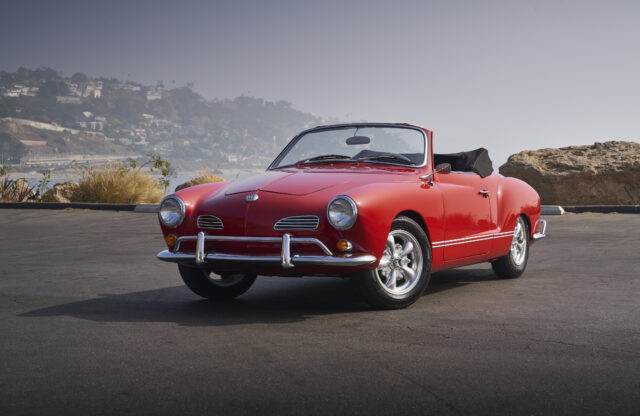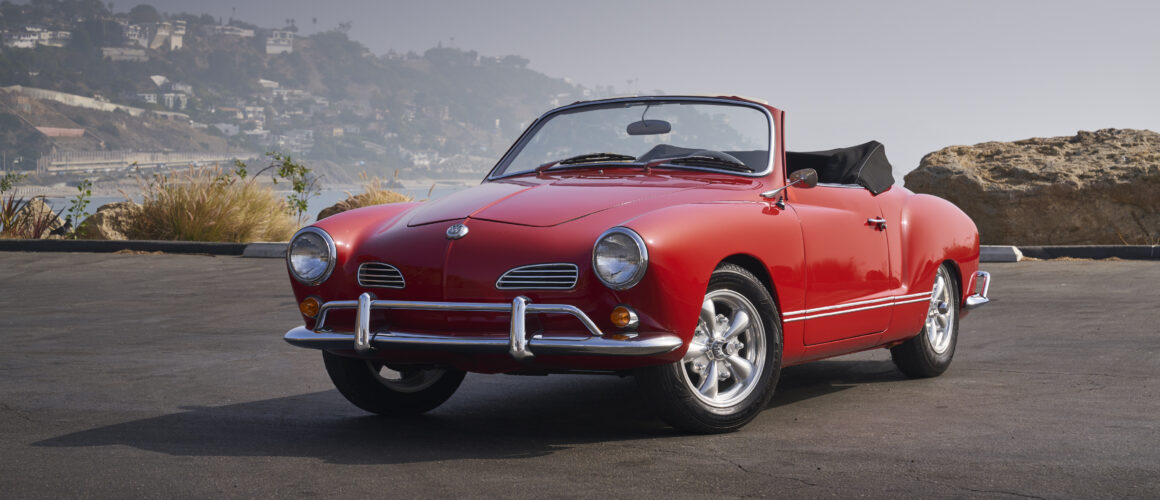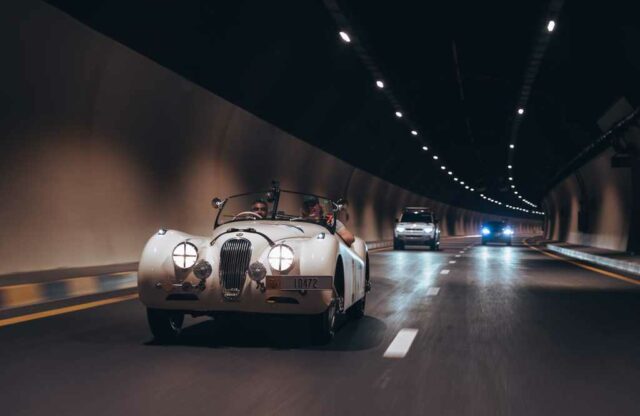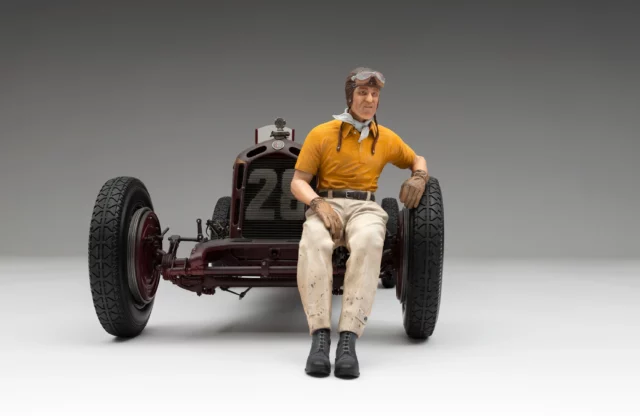The Ghia can trace its origins back to Karmann’s work on the Volkswagen Beetle drop-top. The car-body firm saw the potential in the platform, and approached VW with a proposal for a sports car co-developed with the Ghia design studio, with Luigi Segre on the pencils. In 1955 the Type 14 Karmann Ghia was launched.
Its inherent beauty won the car plaudits from the public, even if the Beetle underpinnings meant this elegant machine was more of a cruiser than its racy profile suggested. Continual tweaking and honing through the production run meant it rarely dropped in popularity.
A switch to 12-volt electrics from 1967-on, and independent rear suspension on all 1969 and newer models, were the major mechanical changes. However, there are several styling changes that still cause Karmann Ghia aficionados to argue about which years’ styling looked best.
The Type 34 of 1961 was a larger car, styled by Sergio Sartorelli and based on the Type 3 VW chassis. Sold alongside the original Karmann, it was marketed as a plusher alternative, offering more standard kit and space but at a higher cost. It had more modern suspension and luxury extras such as an electric sunroof and better trim. Higher pricing and no US sales limited uptake, and it proved to be less successful than the original. Production wrapped up in 1969, with 42,498 built.
Mason Hogg of the Karmann Ghia Centre explains the appeal: “Italian design by Ghia with German underpinnings,” he says. “You get the best of both worlds: style and reliability.” Approximately 440,000 Ghias were constructed in total, and thanks to the wide availability of parts and the cars’ popularity, the survival rate is relatively high.
ENGINE

Because the Karmann Ghia Type 14 is a Beetle underneath the elegant lines, it benefits from reasonable parts prices and good availability. The rear-mounted flat-fours range between 1.2 and 1.6 litres, and weep oil just like any healthy Beetle would.
“The first thing I do when checking an engine is to grab the bottom pulley and see if there is much movement back and forth,” says Mason. “If there is, it will need a rebuild sooner rather than later because the oil pressure will be low. Secondly, smoking on start-up indicates worn rings.”
“Regular oil changes are a law to abide by, and owners can expect 100,000 miles out of a well maintained engine before a rebuild is needed,” he adds. Check fanbelts and oil coolers – overheating is the top killer. You can expect to find reworked carbs, upgraded manifolds and rebored engines, because modification isn’t always seen as a bad thing in the Type 14 world.
GEARBOX
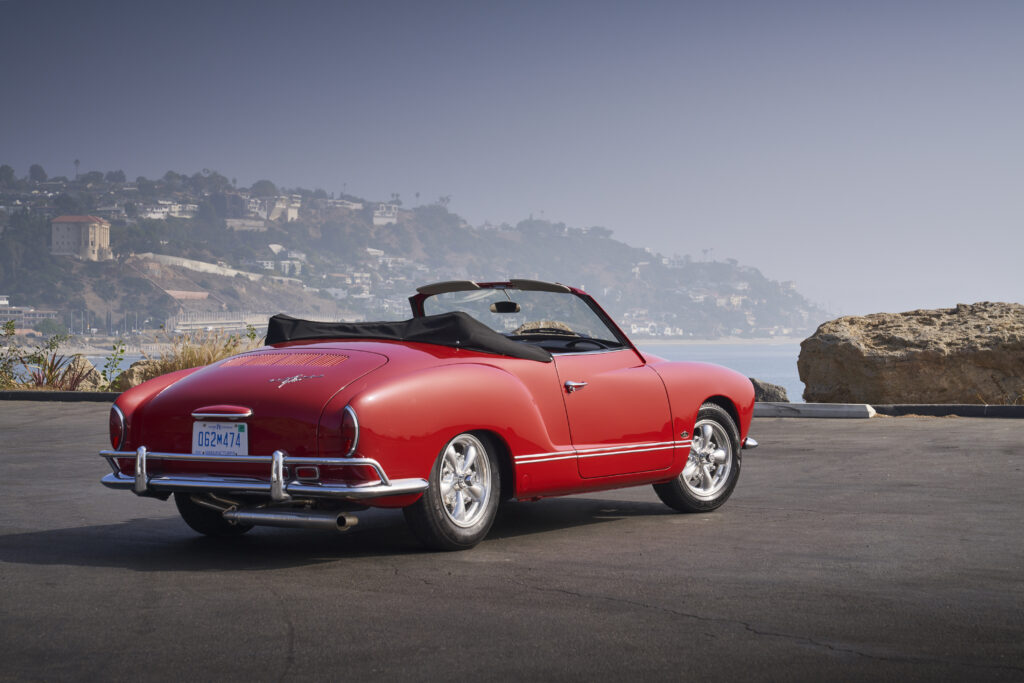
These ’boxes are tough, and from 1961 all forward gears received synchromesh. In 1968 a three-speed semi-auto was made available. Parts are easy to come by – again, it’s all Beetle derived – and the low power and torque outputs mean clutches last a long time, although rattling in neutral can indicate worn bearings.
SUSPENSION AND BRAKES
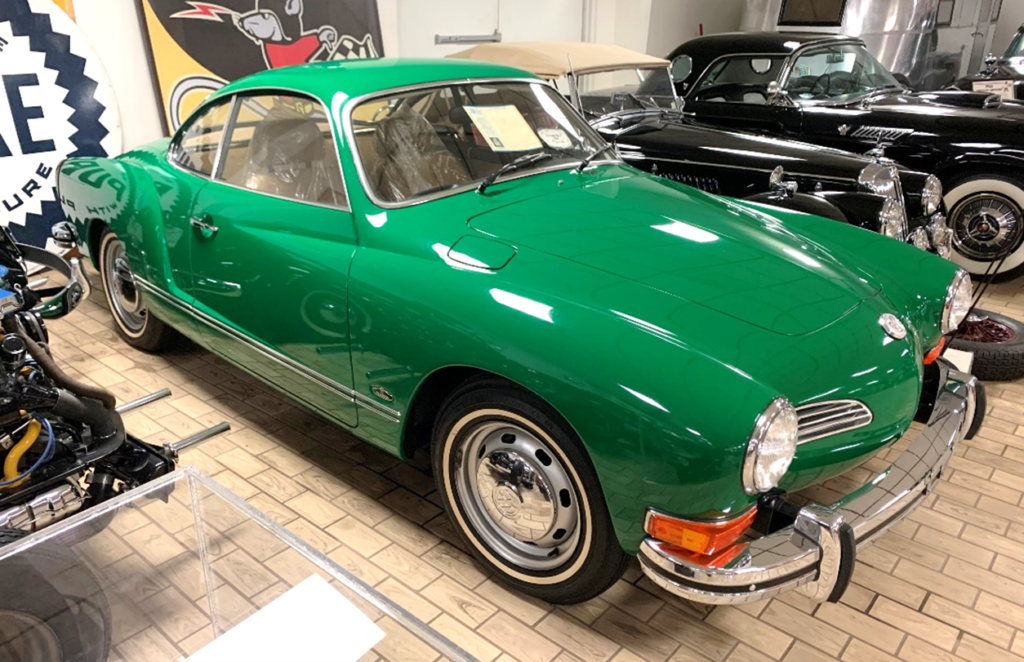
The suspension and brake set-up varies from year to year. “Walk round the car and lean on each wing. If the dampers squeak and don’t settle quickly, it could indicate worn dampers,” says Mason. “For the steering, see if you can raise the car and spin the wheels, to check the bearings. Meanwhile, too much play at the steering wheel is an MoT failure.”
Early Ghias had drums all round, with post-’67 Type 14s getting front discs. Semi-trailing-arm rear suspension replaced the swing axles in 1969, which is worth knowing if you are looking for a sweeter-handling variant or just want an original example. Check the tyres for uneven wear, because this can mean the suspension components are no longer fresh.
BODYWORK
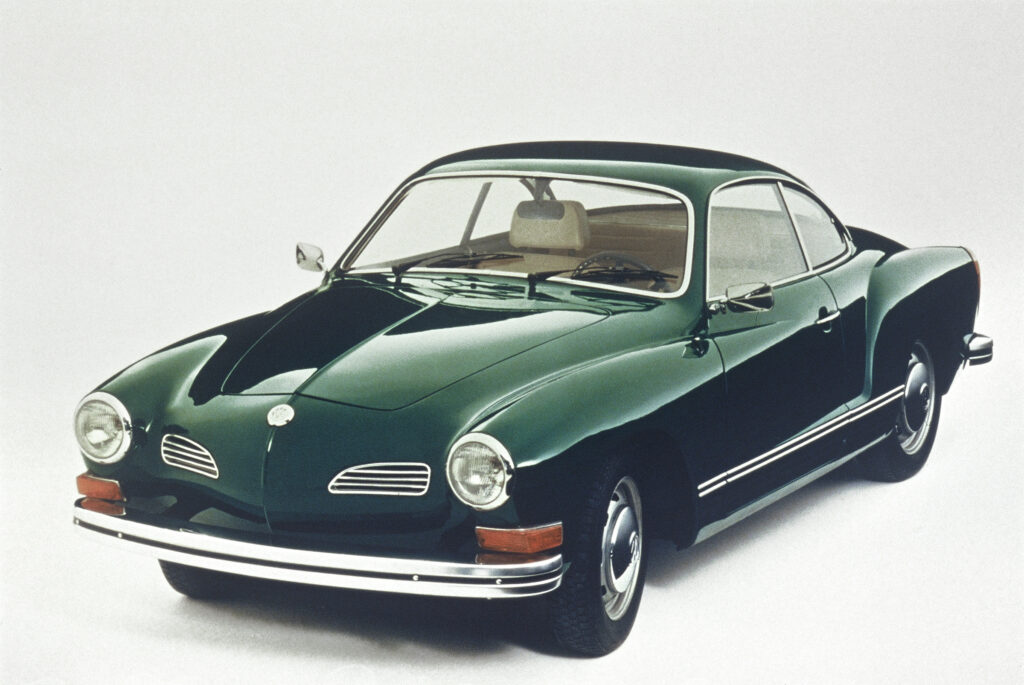
This is the area of most concern when considering a purchase. “Bodywise, walk around the car and check out panel fit and look for accident damage,” says Mason. “Then inspect the outer sills and inner heater channels for rust.”
Rot or damage over several panels may render a car financially unrealistic to restore thanks to the parts and labour cost to put it all back together again.
Sills are especially important on drop- tops because strengthening beams run through this area to provide structural integrity. These were once impossible to get, but can now be sourced; any rot issues here are not as serious as they used to be.
The rear bootlid, spare-tyre well and around the battery, where spilt acid can cause issues, are also known rust spots. The single-piece nose cones can be prohibitively costly to replace or repair, so thoroughly investigate for accident damage.
INTERIOR

An otherwise sound Type 14 with a less-than-great cabin needn’t be a deal-breaker. Trim is readily available, and entire retrims are far less costly than extensive body or mechanical work – prioritise those. The Type 34 is mechanically identical to other Type 3-chassis cars, such as the 1500 and 1600 Notchback. As in the older Ghia, it has unique interior trim and bodywork compared with other VW models. Lower production numbers mean parts are slightly harder to source.
WHICH TO BUY
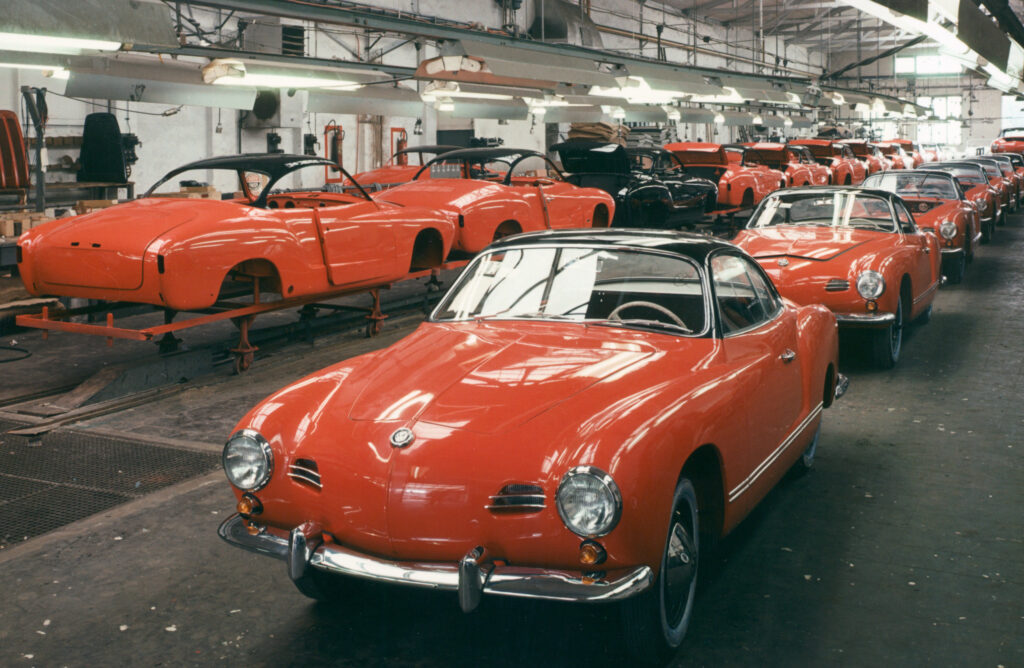
Speed freaks and adrenaline junkies should look elsewhere for their thrills. Remember, this is a Beetle underneath, and even in 1.6-litre form acceleration is best described as leisurely. The Ghia is all about stylish cruising at a relaxed pace.
Type 14s built for 1960 and 1967 had a lot of bespoke parts unique to those years of manufacture, so make sure that if you buy one, it’s as complete as possible. Pre-1959 models are called ‘lowlights’ due to their different head and tail-light designs. They’re much rarer than the later Karmann Ghias, and Convertibles from this era are arguably the most collectable of the lot.
The past decade has seen continual price rises, and this will most likely carry on. However, not all cars have been well cared for, so do your homework before committing. There are plenty still around, so you can afford to be selective.
“Fewer Convertibles were made, so their price has always been higher,” says Mason. “As for the year, the lowlights are popular but not great to drive in everyday traffic unless upgraded. My favourite is 1967, which was the first year of disc front brakes and 12v electrics, but still kept the older door handles, styling and so on.”
With affordable mechanicals clothed in beautiful body panels, the Karmann Ghia’s enduring popularity is more than assured. Buy right, and it can be all the classic car you will ever need.
WHAT TO PAY
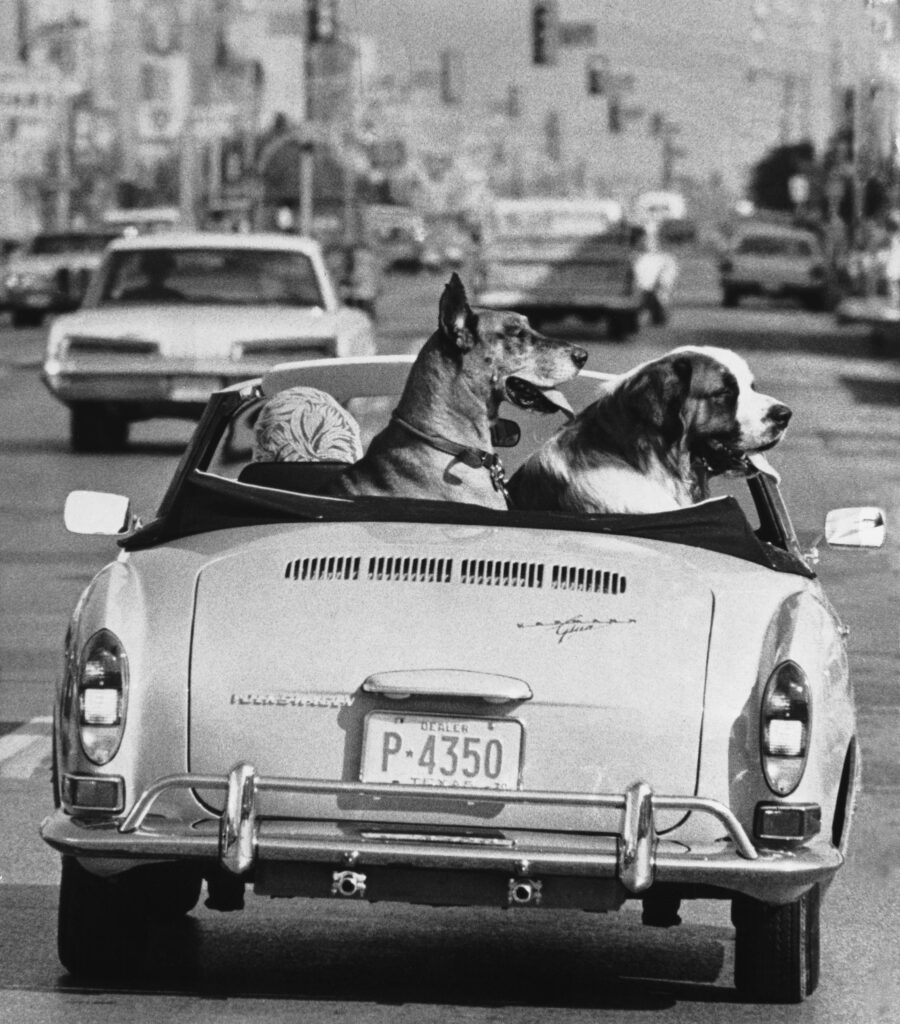
1957 Ghia Convertible (UK)
Fair: £7600
Good: £11,900
Excellent: £19,800
Concours: £27,500
1957 Ghia Coupé (US)
Fair: $13,300
Good: $32,100
Excellent: $63,400
Concours: $89,700
SPECIFICATIONS
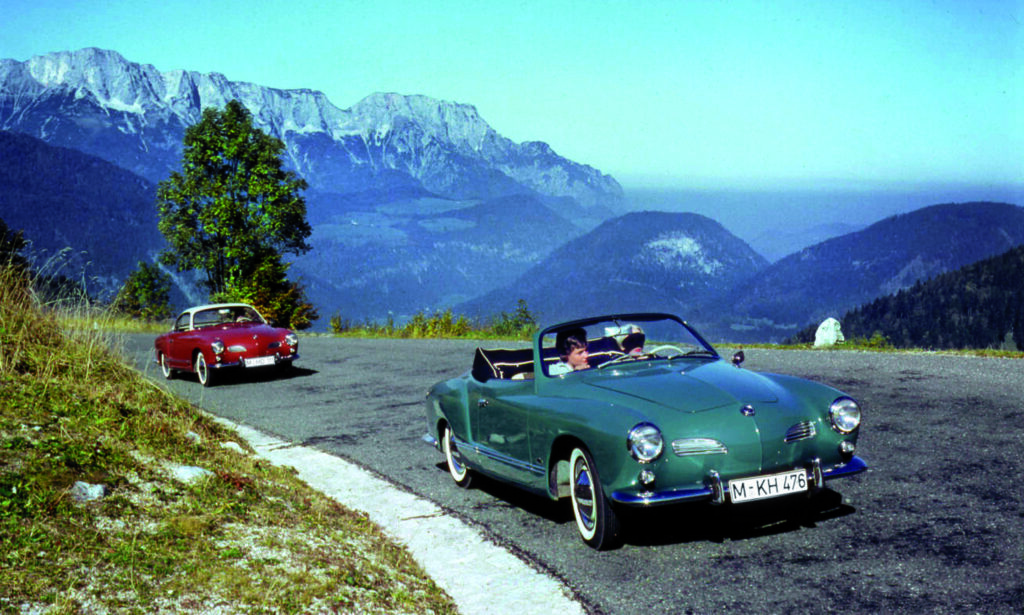
1.2-litre flat-four
Power: 34bhp
Top speed: 75mph
0-60mph: 27 seconds
Economy: 36mpg
1.6-litre flat-four
Power: 60bhp
Top speed: 93mph
0-60mph: 20 seconds
Economy: 32mpg
